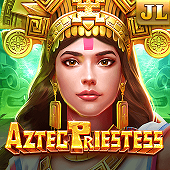Cards Hi Lo: A Statistical Deep Dive

This analysis deconstructs the popular Cards Hi Lo, a premier cards game available on JL Boss Slot. We will explore its mechanics, probability framework, and optimal decision-making from a statistician's perspective. Try the Cards Hi Lo Demo to apply these principles.
Game Mechanics Deconstructed
At its core, Cards Hi Lo is a game of sequential probability. A single card is drawn from a standard 52-card deck, and the player must predict whether the next card will be of a higher or lower rank. The simplicity of this premise belies a dynamic statistical model where each decision's expected value (EV) is quantifiable. The objective is not merely to guess but to make statistically informed wagers. This pure focus on probability sets it apart from more narrative-driven games like Midas Fortune. The Cards Hi Lo Demo is an excellent tool for observing these mechanics firsthand.
RTP and Probability Analysis
The Return to Player (RTP) in this cards game is not fixed; it is a fluid variable contingent on the face-up card. A statistical analysis reveals:
- Low-Card Scenario (e.g., a 2 is shown): The probability of the next card being 'Higher' is exceptionally high (48 out of 51 remaining cards, or ~94.1%). The payout is correspondingly low, reflecting the low risk.
- Mid-Card Scenario (e.g., an 8 is shown): The probabilities are more balanced. Predicting 'Higher' (5 ranks: 9, 10, J, Q, K) or 'Lower' (6 ranks: 2, 3, 4, 5, 6, 7) presents a more significant risk-reward calculation. This is the pivotal decision point in the Cards Hi Lo game.
- High-Card Scenario (e.g., a King is shown): The probability of 'Lower' is dominant, mirroring the low-card scenario.
The optimal strategy involves consistently choosing the option with the highest statistical probability. The Cards Hi Lo Demo allows players to test this hypothesis without financial risk.
Strategic Decision-Making
While luck determines the card, strategy governs profitability in Cards Hi Lo. The primary strategy is to avoid bets where the probability of success is near 50% (i.e., when a 7, 8, or 9 is showing) unless the payout justifies the risk. More complex strategies involve card counting, though its efficacy is limited in single-deck digital versions. For players seeking a different kind of strategic depth, traditional Filipino card games like 32 Baraha offer a rich cultural alternative on the jlboss app. Mastering this cards game requires discipline and a solid understanding of odds.
Cards Hi Lo vs. Other Game Types
The appeal of Cards Hi Lo lies in its direct, player-driven action. Each round is a distinct statistical problem to solve. This contrasts sharply with the communal, high-energy environment of skill-based shooting games. For instance, players looking for cooperative and competitive action against massive targets might find Ocean King Jackpot to be a compelling alternative. However, for purists who appreciate a clear, mathematical challenge, this cards game remains a superior choice. Explore the Cards Hi Lo Demo on jlboss com to see the difference.
Cards Hi Lo FAQ
What is the optimal strategy for Cards Hi Lo?
From a statistical standpoint, the optimal strategy is to always bet on the outcome with the highest mathematical probability. This means betting 'Higher' on cards 2 through 7 and 'Lower' on cards 9 through King. The most risk is associated with an 8, where players may choose to cash out. You can test this on the Cards Hi Lo Demo.
Is the Cards Hi Lo game fair?
Yes. The Cards Hi Lo game on platforms like JL Boss Slot uses a certified Random Number Generator (RNG) to ensure that every card drawn is completely random and independent, simulating a perfectly shuffled deck for each round.
How does this cards game compare to slots?
This cards game involves direct player agency and statistical decision-making in every round, whereas slots are purely games of chance based on RNG outcomes. Your choices in Cards Hi Lo directly influence the immediate outcome.
Related Games on JL Boss Slot







